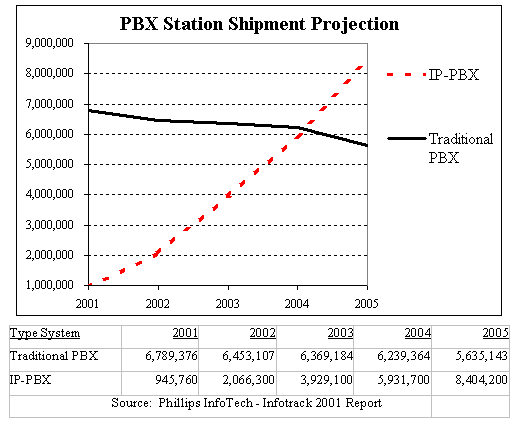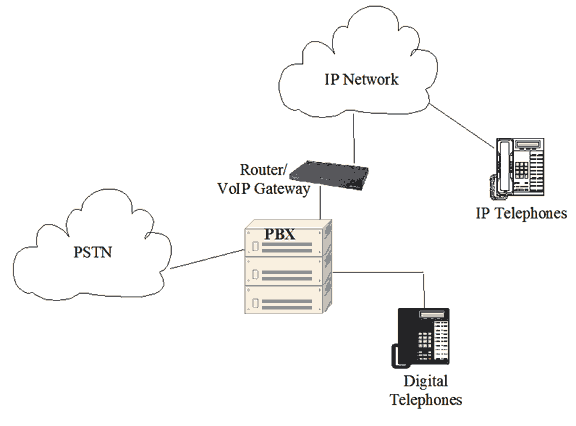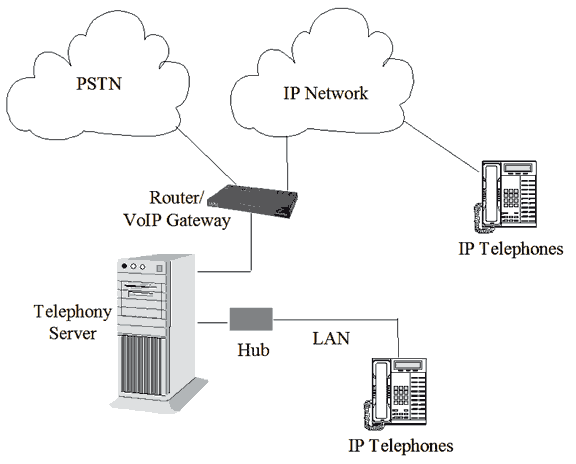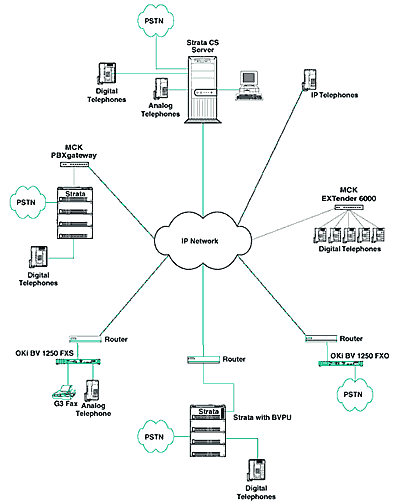|
Toshiba Voice over IP Converged Network Solutions |
The Toshiba IP Vision
Today, Toshiba offers a comprehensive feature rich suite of communication solutions for the Small and Medium Enterprise market with best in class migration, quality and reliability. We plan to continue to evolve our product line to deliver on the value set enabled through emerging technologies such as IP and Voice/Data Mobility. Ultimately we will merge the best of our traditional and open platform systems into a fully converged voice/data IP solution with seamless wireline/wireless capability, unbeatable flexibility in call handling, and comprehensive legacy support.
Our goal is to migrate existing and new customers to a highly adaptive, applications enabled, IP Communications Solution that will allow the Enterprise to do business the way they want to. Our system will incorporate the best of today's quality and reliability, call handling, messaging and other applications in a well abstracted, cutting edge, rules based architecture for unparalleled flexibility. We believe Enterprises shouldn't have to adapt to technology, rather technology should adapt to the needs of Enterprises. We are committed to delivering on the promise of emerging technologies by developing and packaging these technologies into Communication Solutions which allow Enterprises to be more cost effective, more competitive, more connected to their customers, vendors and each other. The Value of IP Technology IP technology is leading to the re-definition of business communications systems. Business communications systems, from an enterprise standpoint are much more than just teleVoIP systems. These systems are increasingly defined by integration of voice, data, and applications all operating on a single network in a seamless manner. This is what is referred to as convergence and it is what allows enterprises to become more efficient by enabling customization of the user experience. IP technology is the catalyst that is causing this convergence trend to take shape. IP Technology Takes Different Forms
Both traditional PBX teleVoIP systems and IP-PBX systems have their advantages. Much is argued in the marketplace about which is better. The truth is neither is better simply by its nature, but only by its application to meet the individual needs of the organization using it. Simply put, choose the type of system that's best for you.
Either way, IP technology is already showing how it can improve the ways in which enterprises operate and reduce costs.
IP-enabled PBX Systems IP-PBX
The Best of Both Worlds If you're thinking this way, you're not alone.
IP-ready When You Are
Industry analysts identify the primary obstacles impeding organizations from migrating to converged networks are perceptions about voice quality over IP, system reliability, interoperability with existing systems, and cost. Toshiba recognizes that to grow and stay competitive, business enterprises must be able to incorporate the latest IP technologies into their communication systems both cost effectively and without disrupting the flow of business. For example:
The Future of IP Telephony in the Enterprise
No enterprise application is being more impacted by convergence to IP than voice communication. Most industry analysts predict that voice for enterprises will rapidly become more IP-based to support remote user and other applications.
 For most enterprises, IP technology will evolve in various forms to serve their applications in the future. Enterprises need this flexibility to meet their needs and give them options to ease into IP technology as their needs
develop.
As one of the leaders in the industry, Toshiba is committed to the business telecommunications marketplace with robust product lines and one of the longest track records in this business.
Applications
IP-based applications will allow enterprises to transform their business in a way that will enable them to enjoy a sustainable competitive advantage. The IP-based voice application will be integrated with other applications such as Unified Messaging, ACD, CRM, and e-commerce to allow enterprises to work the way they want to work. There will be linkages between various databases connecting remote or traveling employees to the office and their customers all the time, from anywhere, and through various portals. True and useable mobility will be realized. IP applications will be smart and the business communication systems will be configurable and adaptable. For example, imagine your cell VoIP and laptop computer connected to your enterprise network wirelessly with the ability to know when you are in the office and automatically 'configures' your system based on this, while also downloading updated contact information to your PDA or cell VoIP. The system could also route your cell VoIP calls to your office teleVoIP. Information will be presented to users the way they need it based on where they are. Smart and configurable systems will create the winning advantage in the marketplace. Conclusion With network access and physical convergence of voice and data services over IP, virtual tie lines, enterprise tie lines, multiple-system networking, and Voice over IP (VoIP) are now achievable in one combined Toshiba solution. Toshiba Strata CTX, Strata DK, and Strata CS users can go from simply transmitting all of their traffic over the same physical link, to encapsulating all of their traffic into the same protocol (IP) for transmission. By delivering a broad array of voice and data services through the same protocol platform, companies avoid the complexities and expense of using different providers and different devices to deploy these services. Unlike other systems that require an external gateway between the PBX and router to handle VoIP, Toshiba's integrated interface cards provides direct conversion between teleVoIPs and IP trunks, eliminating the need to configure multiple devices. Based on and providing capabilities that seamlessly bridge Strata business telecommunication systems, teleVoIPs, and fax machines with digital data networks, organizations can more fully exploit their existing intranet and Internet facilities. Since communications take place over a digital data network, the reduction or possible elimination of long distance costs for voice communications over conventional teleVoIP networks. What's the conclusion? Stick with Toshiba. We know where IP technology and business communication systems are going. We provide the solutions today to get you there safely, and Toshiba has an evolving product strategy to keep you moving in the right direction in the future. .
|


